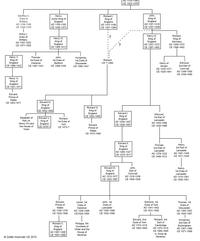THE CHRONOLOGICAL TIMELINE OF THE EUROPEAN HISTORY ACCORDING TO THE HUNGARIAN CALENDAR
THE HUNGARIAN CALENDAR, OR IN OTHER WAY A HYPOTHESIS OF A TIME SLIP OF 200 YEARS IN THE CHRONOLOGY
HUNGARIAN CALENDAR=ASTRONOMICAL DATING
BRIEFLY TO SAY IN OTHER WORDS THE HUNGARIAN CALENDAR IS NOTHING ELSE THAN AN ASTRONOMICAL DATING OF THIS PART OF THE JULIAN CALENDAR WHICH COVERS THE TIME PERIOD THE DATA OF 4th OCTOBER, 1582.
I sincerely hope that my argumentation up to now was quite convincing and reached its goal that is the existence of a time-slip of 200 years became clear and firmly proved.
The time-slip was revealed by the retro-counting of the vernal equinoxes, but the extent of the time-slip with year exactness was verified by the recorded ancient solar eclipses. As it was said before, the historians restored surprisingly well the related chronology of the Antiquity, the corner-points of which will be repeated briefly here below:
The year of CE 153 (Traditional BCE 46 = BC 46, or a.u.c.708)
Julius Caesar who was in this year the “Pontifex maximus” (the pontiff), the consul and the dictator in one person, had reinstated the Roman calendar, inserting (or recovering) two intercalary of 27 days each, which were left out earlier in the period of the civil war.
The numbers of the days in this year were 354 + 54 = 408
(Hungarian Calendar, edition 2004, p. 91-177)
The year of CE 154 (Traditional BCE 45 = BC 45, or a.u.c.709)
In this year, on Jan.1 the Julian calendar was introduced coinciding with a new moon, which coincidence was quite important for the conservative contemporary Romans.
The starting year of the Julian calendar, Julius Caesar is the absolute ruler of the whole Roman Empire. In this year he adopted Octavius, the later Emperor Augustus, and appointed him as his heir of his wealth.
The year of CE 155/Era 1 (Traditional BCE 44 = BC 44, or a.u.c.710)
The devotees of the Republic headed by Brutus and Cassius killed Julius Caesar.
The year of CE 156/Era 2 (Traditional BCE 43 = BC 43, or a.u.c.711)
Octavianus, Antonius and Lepidus, the proconsul of Gallia made the second triumvirate, which was legitimated by the meeting of the populace of Rome.
The year of CE 164/Era 10
(Traditional BCE 35/33 = BC 35/33, or a.u.c.717/719, Ol. 186/1)
In the year of Poplicola and Nerva consuls there was a solar eclipse according to the Chronicon Paschale. This solar eclipse was observable in the whole basin of the Mediterranean Sea on Sept. 4.
(The final countdown, p. 31-33)






